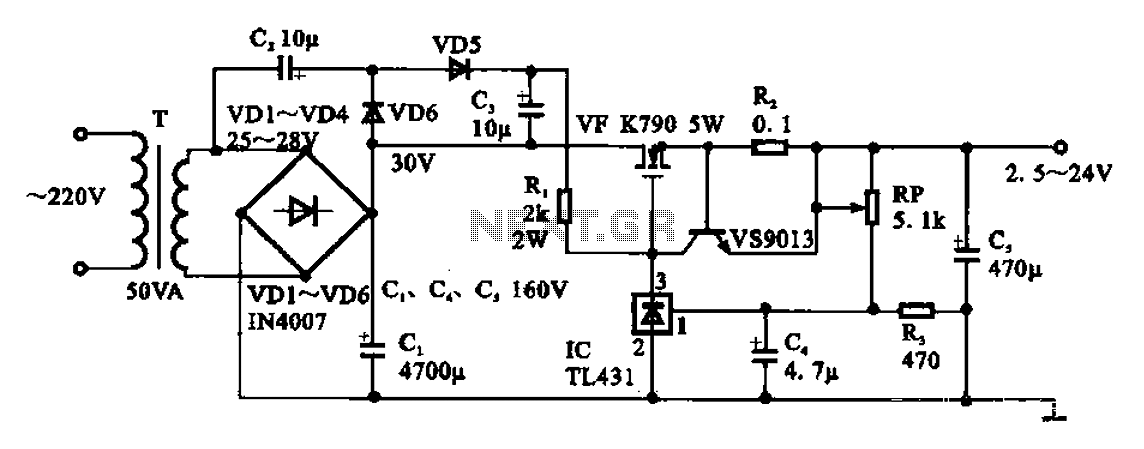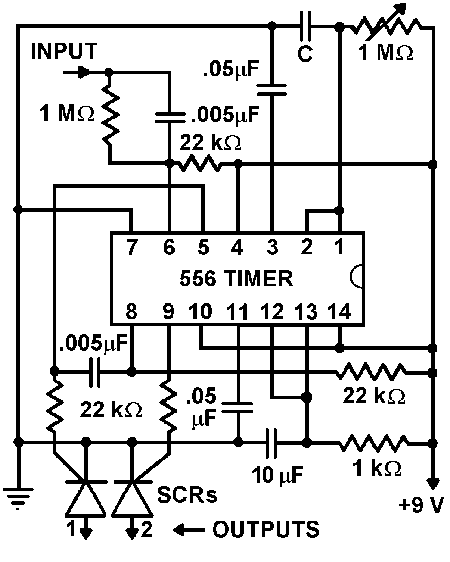
100W RF Amplifier Circuit With BLY94 Transistor

This is a component of a 100W RF amplifier. This circuit is constructed using the RF power transistor BLY94. Components include the BLY94 transistor, inductor, and others.
The 100W RF amplifier circuit utilizing the BLY94 transistor is designed to amplify radio frequency signals efficiently. The BLY94 is a high-performance RF power transistor known for its capability to handle high frequencies and provide substantial output power. In this configuration, it is essential to ensure proper biasing and load matching to maximize efficiency and minimize distortion.
The circuit typically includes an input stage that may consist of a matching network to couple the RF signal into the base of the BLY94. This matching network often employs inductors and capacitors to achieve the desired impedance transformation. The inductor plays a crucial role in tuning the circuit to resonate at the desired frequency, which enhances the amplifier's performance.
The output stage of the amplifier is designed to deliver the amplified RF signal to the load, which could be an antenna or another stage of amplification. It is vital to include appropriate filtering components to suppress unwanted harmonics and ensure that the output signal remains clean and within the specified frequency range.
Thermal management is another critical aspect of the design, as the BLY94 can generate significant heat during operation. Adequate heat sinking and possibly active cooling solutions should be incorporated to prevent thermal runaway and ensure reliable operation.
Overall, the design of the 100W RF amplifier with the BLY94 transistor requires careful consideration of component selection, circuit layout, and thermal management to achieve optimal performance in RF applications.This is a part of a 100W RF amplifier. This circuit built based on RF power transistor BLY94. Component: BLY94 Transistor, Inductor, .. 🔗 External reference
The 100W RF amplifier circuit utilizing the BLY94 transistor is designed to amplify radio frequency signals efficiently. The BLY94 is a high-performance RF power transistor known for its capability to handle high frequencies and provide substantial output power. In this configuration, it is essential to ensure proper biasing and load matching to maximize efficiency and minimize distortion.
The circuit typically includes an input stage that may consist of a matching network to couple the RF signal into the base of the BLY94. This matching network often employs inductors and capacitors to achieve the desired impedance transformation. The inductor plays a crucial role in tuning the circuit to resonate at the desired frequency, which enhances the amplifier's performance.
The output stage of the amplifier is designed to deliver the amplified RF signal to the load, which could be an antenna or another stage of amplification. It is vital to include appropriate filtering components to suppress unwanted harmonics and ensure that the output signal remains clean and within the specified frequency range.
Thermal management is another critical aspect of the design, as the BLY94 can generate significant heat during operation. Adequate heat sinking and possibly active cooling solutions should be incorporated to prevent thermal runaway and ensure reliable operation.
Overall, the design of the 100W RF amplifier with the BLY94 transistor requires careful consideration of component selection, circuit layout, and thermal management to achieve optimal performance in RF applications.This is a part of a 100W RF amplifier. This circuit built based on RF power transistor BLY94. Component: BLY94 Transistor, Inductor, .. 🔗 External reference
.gif)




